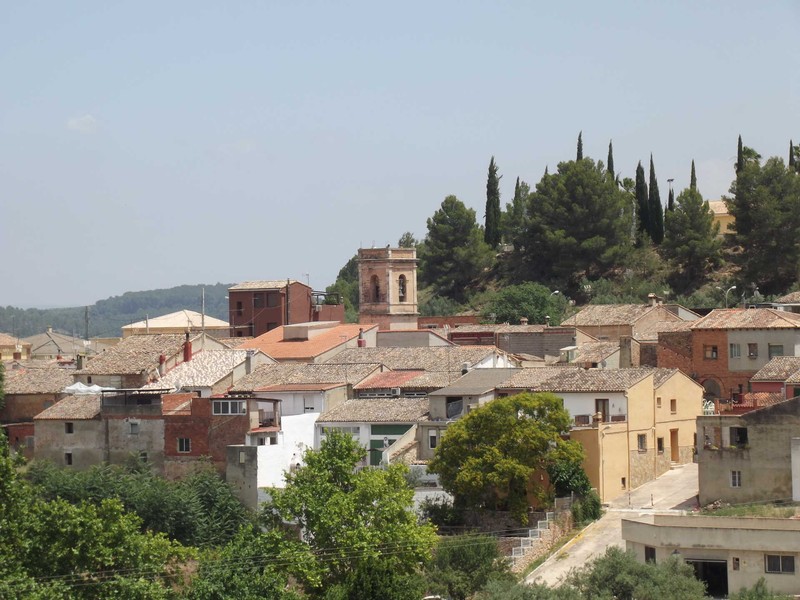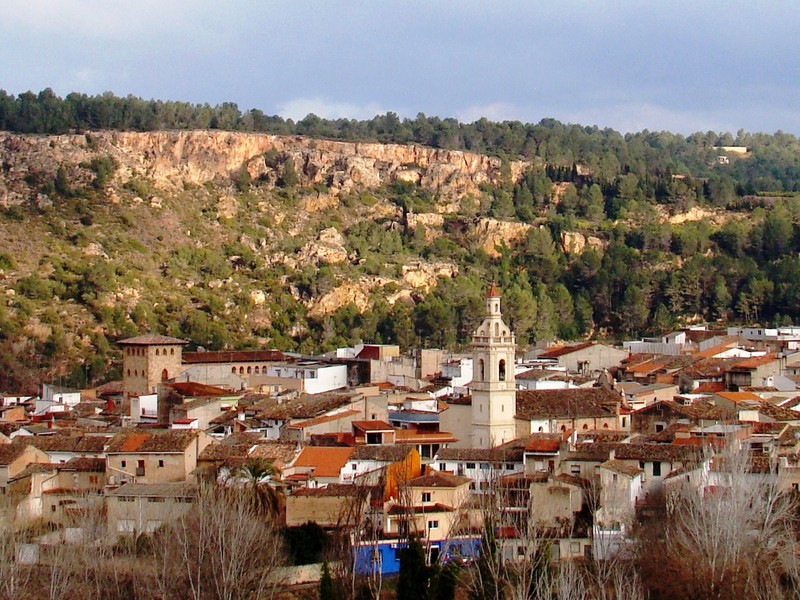Pico Caroche (Bicorp)
The Caroche or Caroig peak is a mountain of 1,126 meters, located in Teresa de Cofrentes, Spain. It is situated
Between the Mesolithic period and the consolidation of the agricultural revolution in La Canal during the Neolithic period (9000-4500 BC), the Caroig Massif, which includes the Quesa basin of the Río Grande, was inhabited by active tribal communities of hunters armed with bows. They were nomads who roamed around these mountains attracted by their abundance of water and prey to hunt. It was they who, in different chronological phases, used the walls and ceilings of the rocky shelters in the area to depict, with a ritual or transcendent meaning, the hunting scenes and animals, honey gathering, daily life, stylized anthropomorphic figures, etc., that are characteristic of Levantine Cave Art; along with other representations of a schematic or abstract nature.
At the Voro Rock Shelter, Quesa has one of the most renowned examples of this art form, which was recognised by UNESCO with World Heritage status in 1998. Studied for the first time in 1972 by Salvador (Voro) Gómez Bellot, it has a 20-m long limestone cornice that protects a cavity (1.50/2 m high and with a similar depth) used as a gathering place in Prehistoric times. It is located on the left-hand side of the Río Grande, on the Loma del Lobo and has a protective fence that was renovated in 2013. Visits are accompanied by a guide.
Archaeologists have identified 70 figures in the Voro Rock Shelter many of them combine to form scenes which decorate the wall and ceiling of the shelter: archers in different positions, women, goats and deer. The cluster of greatest interest is formed by a group of four archers depicted in great detail, they are carrying bows and arrows and wearing decorations and different types of headdresses. Due to their alignment and stance of walking or moving in a synchronised manner towards the left of the viewer, it was originally considered that they may have represented a ritual dance. However, the thematic and chronological contextualisation of the scene with others from the same Massif that represent episodes of war, has led experts in the last decade of the 2010s, to define the scene as a “procession of warriors”.
The Caroche or Caroig peak is a mountain of 1,126 meters, located in Teresa de Cofrentes, Spain. It is situated
You will love La Canal de Navarrés! It’s an ideal destination for the whole family, to discover with friends, and

Estubeny, located in the interior of the province of Valencia, is an inland destination that hides a unique natural space,

Anna is a beautiful municipality in the Canal de Navarrés, well known for its Anna Lake, a lagoon surrounded by
Copyright © 2023. La Canal de Navarrés. All rights reserved.
Do not hesitate to contact us for any further information.
This website uses cookies so that we can provide you with the best user experience possible. Cookie information is stored in your browser and performs functions such as recognising you when you return to our website and helping our team to understand which sections of the website you find most interesting and useful.
Strictly Necessary Cookie should be enabled at all times so that we can save your preferences for cookie settings.
If you disable this cookie, we will not be able to save your preferences. This means that every time you visit this website you will need to enable or disable cookies again.